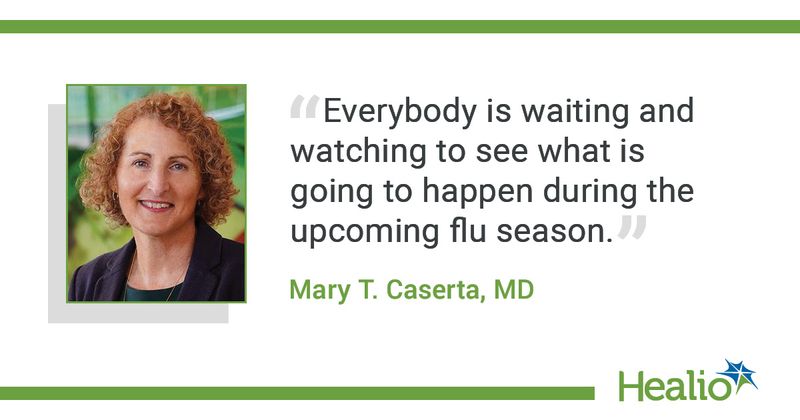Q&A: RSV surge hits US children, stretching hospital capacity
Common childhood infections have returned following an interruption caused by the COVID-19 pandemic, including respiratory syncytial virus, which has caused a recent surge in the United States.
Healio spoke with Mary T. Caserta, MD, a professor of infectious diseases in the department of pediatrics at the University of Rochester Medical Center, about what physicians can expect from RSV.

Healio: What is causing the surge of RSV?
Caserta: RSV is a well-known respiratory virus that had a very regular and typical circulation pattern every late fall and winter in the United States. Since the beginning of the pandemic, there has been a notable change in the epidemiology of RSV, thought to be due in part to nonpharmacological interventions adopted to stop the spread of SARS-CoV-2.
During the winter of 2020 to 2021, there were few RSV infections reported. In the late spring and early summer of 2021, RSV infections began to surge, with variable spread across the country through the summer and fall. That was the first atypical year, with RSV circulating outside of the routine months, with little RSV in the winter of 2021 to 2022. Now, we're having another early surge in 2022, with RSV causing a substantial number of infections throughout the country in numbers that are more typical of a pre-pandemic winter surge.
Healio: Are providers equipped for the surge?
Caserta: Pediatricians are very experienced in the diagnosis and care of infants with RSV upper and lower respiratory infections. Unfortunately, the large number of RSV infections appears to be straining the health care system because of the substantial number of children requiring evaluation and hospitalization. Before the pandemic, RSV would usually infect about half of the birth cohort in one season, so that by 2 years of age, just about everyone had been infected with RSV. Now we have 2-year-olds who have never had RSV, and we're seeing large numbers of children needing to be cared for and hospitalized. I know in our hospital, we're seeing a sizable number of cases and it's really stretching our capacity. Fortunately, I believe everybody in the pediatric world is working hard to make sure all children are cared for appropriately.
Healio: What can pediatricians expect to see in patients with RSV?
Caserta: Typically, the infant develops a little bit of a runny nose, congestion, some sneezing and mild cough. After 2 to 3 days, a minority of children develop lower respiratory tract disease with increased cough and difficulty breathing. They can have significant wheezing, poor feeding, lethargy and worsening signs of respiratory distress with apnea and cyanosis. Fever may be present, but it is often at the beginning of the illness and not typically prolonged or pronounced.
Healio: Is this another off-season surge, or is RSV getting back to a more “regular” schedule?
Caserta: This surge is earlier than typical, so I would still call this off-season or inter-season spread of RSV.
Healio: Can you give an assessment of the vaccine pipeline for children?
Caserta: RSV definitely causes a significant burden of disease that we need to prevent. Control of RSV may require overlapping means of protection, such as maternal immunization or monoclonal antibody treatment to protect the youngest newborns, followed by live-attenuated vaccine for the infant. Given these challenges, it’s exciting to note the progress in the world of RSV prevention. Pfizer has reported encouraging results from their ongoing maternal pre-fusion F protein-based RSV vaccine trials. The vaccine has been safe, with women mounting anti-RSV neutralizing antibody responses, followed by efficient transplacental transfer to the newborn. There is a new extended half-life monoclonal antibody product from AstraZeneca called nirsevimab. Phase 3 studies of nirsevimab in preterm and term infants demonstrated protection against medically attended lower respiratory tract infection. Merck is also testing a new extended half-life monoclonal antibody product called clesrovimab. For the older infant, there are ongoing trials of live-attenuated RSV vaccine developed by the NIH.
Healio: Are there indications that other respiratory viruses are surging?
Caserta: I believe everybody is waiting and watching to see what is going to happen during the upcoming influenza season. I've seen the concern about the triple threat of COVID, influenza and RSV in the popular media. We're certainly seeing the RSV surge with the circulation of other respiratory viruses, including parainfluenza virus 1, human metapneumovirus and rhinovirus. After 2020, I'm out of the prediction business, but I would encourage everyone who is eligible to be sure they are up to date with their influenza and COVID-19 vaccines.
